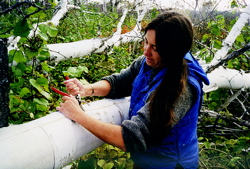When I was growing up, “rubella baby” was a term that everyone in our community knew. The worldwide 1963–1965 epidemic of German measles hit Michigan so hard that the Michigan School for the Deaf had to start up a special unit for preschoolers who’d been born both deaf and blind. Their mothers had been exposed to the virus during their first trimester of pregnancy, writes Lois Beardslee, an author and tribal member who lives in Leelanau County. Epidemics often hit Michigan’s Native American communities harder than other communities, because the culture of northern Michigan in the first half of the 20th century dictated closing off roads to infected Indian communities, not even letting in doctors. Vaccinating one’s children should be an important social obligation that transcends economic cultural affiliations.
Posts
With dangerously low child vaccination rates against measles in this region, federal government funding cuts couldn’t come at a worse time for the Benzie-Leelanau District Health Department. The BLDHD learned on April 1 that it would face a funding shortfall of more than $230,000 in the coming fiscal year—much of it related to school health services the department provides to local schools. In Leelanau County, 82 percent of children between ages 6-18 years have received the MMR vaccine, which offers 97 protection against measles, mumps and rubella after the second dose. In Benzie County, the number is 83 percent. “That rate is relatively low. Ideally, we should be at 95 percent,” said BLDHD health officer Dan Thorell. “Very few vaccines are as effective as the measles vaccine.”
Share this:
- Click to share on Facebook (Opens in new window) Facebook
- Click to share on X (Opens in new window) X
- Click to email a link to a friend (Opens in new window) Email
- Click to share on Reddit (Opens in new window) Reddit
- Click to share on Pinterest (Opens in new window) Pinterest
- Click to share on LinkedIn (Opens in new window) LinkedIn
- Click to print (Opens in new window) Print
- Click to share on Tumblr (Opens in new window) Tumblr


